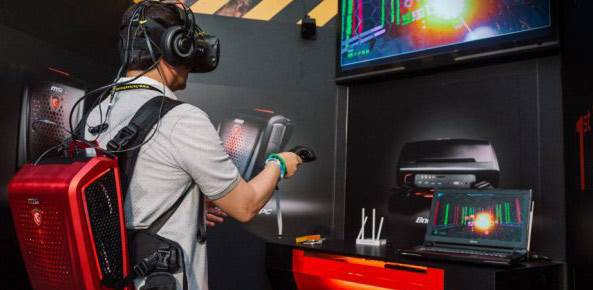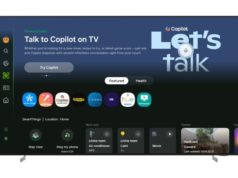Tech giant Microsoft aims to establish its holographic technology as the go-to operating system for augmented reality (AR) and virtual reality (VR) devices. Yesterday, Microsoft executives said the company has opened up its Windows Holographic to all developers to build devices.
Microsoft is also in the process of working with HTC’s Vive team to bring the Holographic Windows 10 interface to HTC’s products. The platform is aimed at VR and AR headset makers. Microsoft demonstrated an HTC Vive working with a HoloLens using the Microsoft technology at the Computex conference in Taipei.
The Windows Holographic platform powers mixed-reality experiences currently available on Microsoft HoloLens. The platform offers a holographic shell and interaction model, perception APIs (application programming interfaces) and Xbox Live services, according to Microsoft.
Object Understanding
The executives used the occasion to tout a variety of Windows products, including PCs, gaming systems and Internet of Things technology. They also noted that the upcoming Windows 10 Anniversary Update will create opportunities for modern computing devices via the Windows 10 operating system and the Windows Holographic AR and VR technology.
The market for virtual reality devices is expected to be 80 million devices per year by 2020, Terry Myerson, executive vice president of the company’s Windows and Devices Group, said today on the Microsoft blog. Still, a lot of today’s AR and VR devices and experiences don’t work with each other due to disparate user interfaces, interaction models, input methods, peripherals and content, he said.
In addition, most virtual reality experiences can’t mix real people, objects, and environments into the virtual world, hampering creation and collaboration. Windows 10 solves this by having human, environmental and object understanding built into it, according to Myerson.
Bringing Environments Together
At Computex, Myerson showed a video that portrayed a HoloLens user discerning the avatar of an Oculus Rift user, and vice-versa. In the video, those individuals and a third HoloLens user collaborated on a project and passed holographic items between them. And in a live demonstration at Computex, two Microsoft employees digitally painted a virtual motorcycle that could be seen via both a HoloLens and an HTC Vive.
“Many of today’s devices and experiences do not work with each other, provide different user interfaces, interaction models, input methods, peripherals, and content,” Myerson told the audience. Microsoft intends to solve that problem with Windows 10 and Windows Holographic.
The transition into Microsoft Holographic might not be much of a problem for users of Oculus Rift and HTC Vive, since both products work in tandem with Windows 10 PCs. The latest Windows operating system is installed on about 300 million devices to this point, according to Microsoft.
Among the companies that Myerson said Microsoft would be working with in its holographic ventures are Intel, AMD, Qualcomm, HTC, Acer, ASUS, CyberPowerPC, Dell, Falcon Northwest, HP, iBuyPower, Lenovo and MSI.







